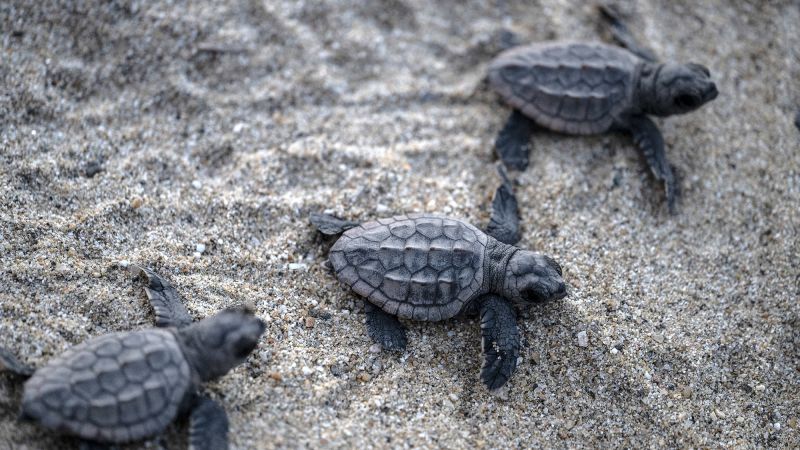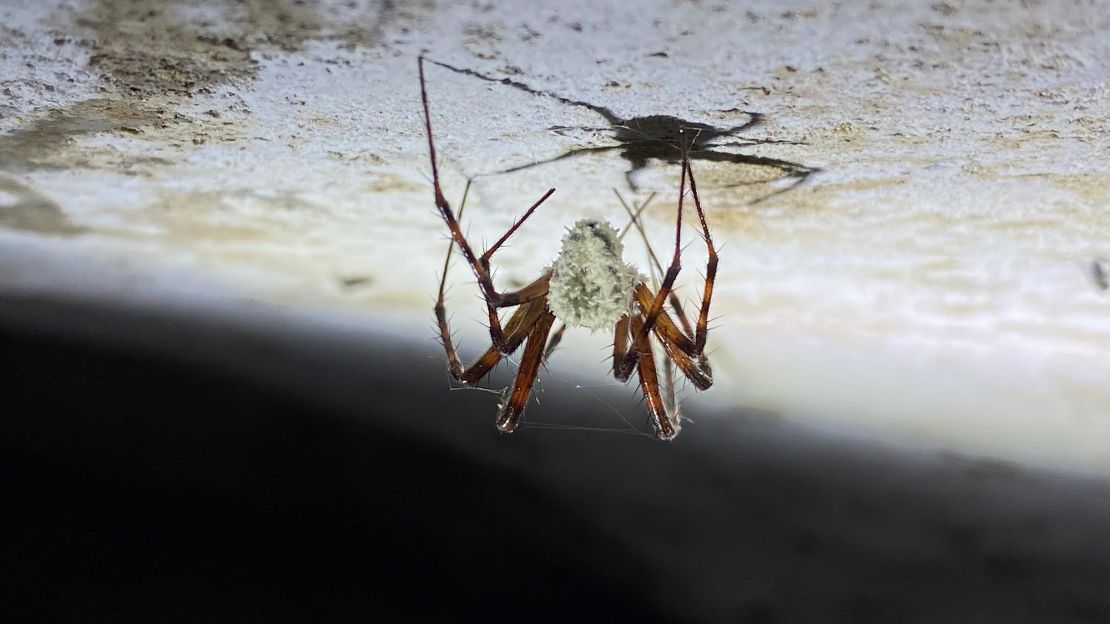
Editor’s Note: A version of this article originally appeared in CNN’s Wonder Theory science newsletter. To receive it directly, sign up for free here.
CNN
—
One of Earth’s profound enigmas resides deep underground: the planet’s inner core.
Composed primarily of iron and nickel, this intensely hot, solid sphere is approximately 70% the diameter of the moon.
Recent studies indicate that this dense center has altered its spin, and now researchers have discovered evidence that the inner core’s shape is shifting.
By analyzing earthquakes powerful enough to penetrate into the planet’s core, scientists have detected signs of deformation. No need to worry, though—this transformation will not directly impact life on our planet.
Over time, alterations in this innermost layer could influence the Earth’s magnetic field, which acts as a protective barrier against solar radiation and assists many animals in their migrations.
Loggerhead sea turtles embark on remarkable journeys across oceans, utilizing a unique ability that leads them to nesting and feeding grounds without visual landmarks.
These turtles depend on Earth’s magnetic field for navigation, employing a magnetic map for locating themselves and a magnetic compass to determine their direction.
A recent study reveals that loggerheads can actually memorize magnetic fields to aid in locating food after their migrations.
In fact, juvenile loggerheads in captivity will exhibit a unique “dance” in response to magnetic signals that remind them of where they previously found food—a delightful action that you must see to fully appreciate the charming movement.
NASA’s astronauts Butch Wilmore and Suni Williams, who have been aboard the International Space Station since June following Boeing Starliner’s inaugural crewed test flight, may be returning home sooner than expected, with plans for their return flight as early as mid-March.
This moment marks a period of transition for the agency, where employees have voiced concerns regarding directives from the Trump administration concerning anti-diversity, equity, inclusion, and accessibility communication.
NASA confirmed that the Space Launch System megarocket, which was first launched in 2022, is “essential” to the Artemis lunar exploration program, even amid layoffs announced by Boeing related to the program.
Meanwhile, Blue Origin, the rocket company owned by Jeff Bezos, plans to lay off over 1,000 staff shortly after launching its first orbital rocket, New Glenn recently.
Astronomers have discovered the highest-energy cosmic “ghost particle” to date, an extraordinary finding from a surprising location: the depths of the Mediterranean Sea.
The KM3NeT Collaboration has been constructing a vast network of sensors in the deep sea near Toulon, France, and Capo Passero, Italy, for nearly a decade to detect neutrinos—particles that can effortlessly pass through any matter and can provide insights into some of the universe’s most energetic events, including gamma-ray bursts.
When a powerful neutrino made its way through the partially completed ARCA detector off the Italian coast, it activated sensors illuminated with a bluish glow. Researchers are now attempting to determine what extreme astronomical event produced this particle and propelled it towards Earth.
Additionally, an image captured by the Euclid space telescope has presented an astonishingly detailed view of a rare astronomical phenomenon known as an Einstein ring, where the light from a distant galaxy forms a luminous circle around a closer one.
A recent analysis of bones belonging to ancient humans found in a cave near Kraków, Poland, indicates that early Europeans may have consumed the brains of their adversaries.
Researchers examined the remains of ten individuals from the Magdalenian culture, who inhabited Europe between 11,000 and 17,000 years ago. The bones exhibited marks and cuts indicative of the removal of brain matter and bone marrow.
Prior studies have indicated that cannibalism was prevalent among the Magdalenians and that they practiced it as part of their funerary customs. However, the skulls in this case suggest it was carried out during acts of warfare, according to archaeologist Francesc Marginedas from the Catalan Institute of Human Paleoecology and Social Evolution in Spain.

Speaking of brains, scientists have identified a fungus that entices cave spiders from their webs and transforms them into “zombified” creatures.
This fungus was first noted when a film crew was documenting inside an abandoned gunpowder storage room at Castle Espie Wetland Centre in Northern Ireland in 2021. The crew observed an orb weaver spider behaving unusually, indicating a behavioral alteration.
The fungus, named Gibellula attenboroughii, infects and kills the spiders, subsequently using their bodies to disperse its spores. Researchers are still investigating how exactly this fungus manipulates the spiders’ brain functions to assert control.
Ponder these exciting discoveries while you enjoy your morning coffee:
— Astronomers have uncovered a colossal radio jet formed in the universe’s infancy, the largest known object of its type in the distant cosmos.
— Notably, shark attacks experienced a significant decline in 2024 globally, prompting experts to investigate the reasons behind this trend.
— Archaeologists have uncovered the remains of an ancient basilica in the basement of a high-rise in London, unearthed during construction in what was once the center of Roman London.
— The James Webb Space Telescope is set to observe asteroid 2024 YR4 soon to determine if this celestial body poses a potential risk to Earth in 2032.
Enjoyed this content? There’s even more to explore. Sign up here to receive the next edition of Wonder Theory directly to your inbox, brought to you by CNN’s Space and Science writers Ashley Strickland, Katie Hunt and Jackie Wattles. They delve into the wonders of planets beyond our solar system and discoveries from ancient times.









